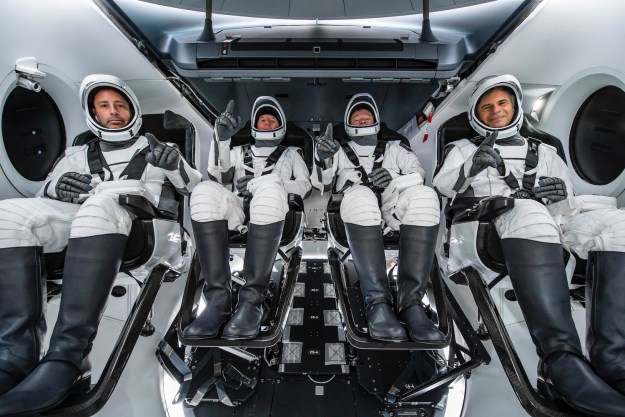The James Webb Space Telescope is currently targeting a fall launch date, and this week, the world’s largest and most powerful space science telescope opened its main mirror for the last time before it embarks on its highly anticipated mission.
As the video at the top of this page shows, the 6.5-meter (21 feet 4 inch) golden mirror really is a sight to behold, with the recent test a final confirmation of the telescope’s ability to fully expand and lock the 18 hexagonal mirrors into place.
The space agency used special gravity-offsetting equipment connected to the satellite to simulate a zero-gravity environment to ensure the test provided the most accurate data possible.
NASA and main contractor Northrop Grumman said the successful exercise was the final one in a long series of tests to check that the telescope is in full working order prior to its launch later this year.
The James Webb Space Telescope was born from an international collaboration between NASA and the space agencies of Europe and Canada. Too large in its open form to fit inside the nose cone of any rocket, the satellite will have to be folded “origami style” before being carried into space by an Arianespace Ariane 5 rocket in October.
Around 1 million miles from Earth, the telescope’s sunshield will unfold into the size of a tennis court before deploying the main mirror that will set about exploring the distant worlds around other stars to see if any have an atmosphere similar to Earth’s. The space science observatory will also gather data that could help researchers unlock some of the many mysteries of our solar system.
So, yes, there’s a lot riding on the mission.
“The primary mirror is a technological marvel,” said Lee Feinberg, optical telescope element manager for Webb at NASA’s Goddard Space Flight Center in Greenbelt, Maryland. “The lightweight mirrors, coatings, actuators and mechanisms, electronics and thermal blankets when fully deployed form a single precise mirror that is truly remarkable.”
Feinberg added: “It’s humbling to think about the hundreds of dedicated people across the entire country who worked so hard to design and build the primary mirror, and now to know launch is so close.”
Editors' Recommendations
- Swatch lets you put a stunning Webb space image on a watch face
- How to watch SpaceX Crew-4 astronauts launch to ISS
- NASA’s private Ax-1 crew gets some extra time in space
- NASA still struggling to fuel its Space Launch System rocket
- James Webb Space Telescope has gone cold, but that’s good


